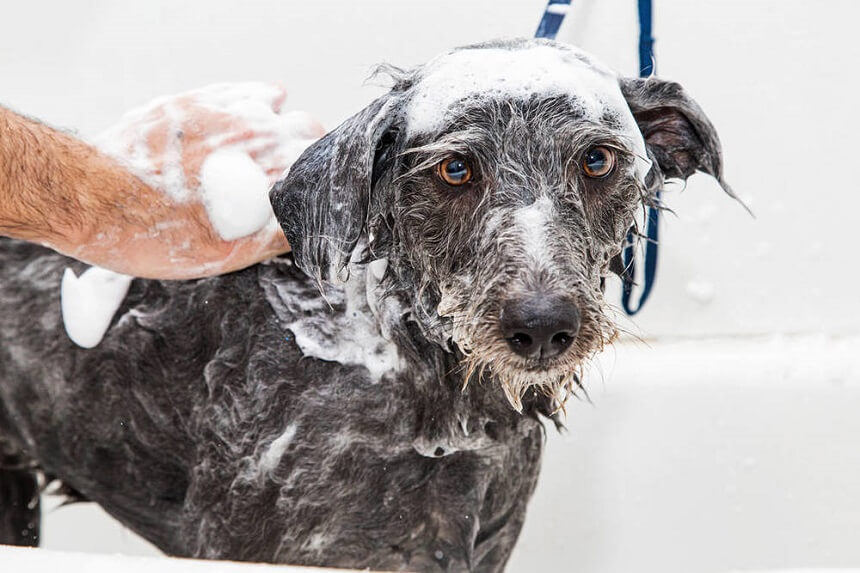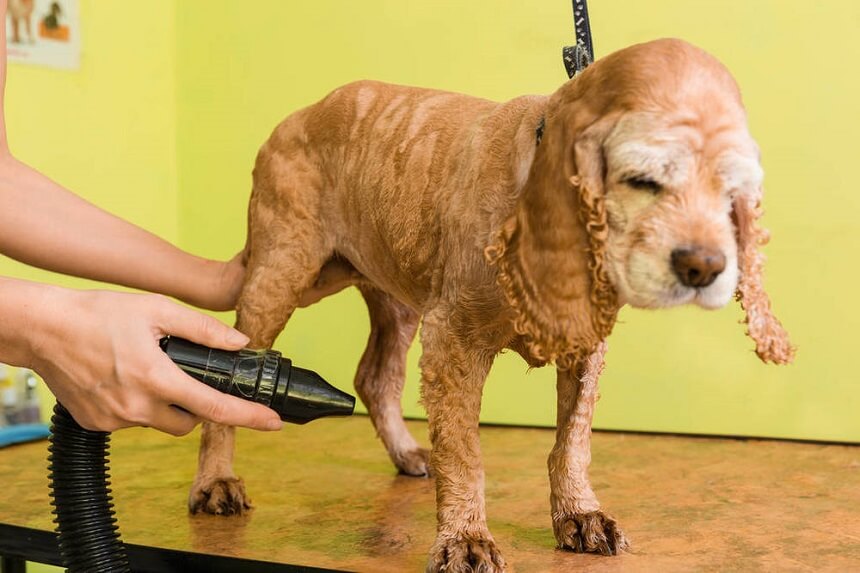How Often Should You Bathe a Dog?

Bathing a dog is important in maintaining a perfect coat. But the importance of bathing isn’t much talked about. According to a study, 56% of dog owners don’t bathe their dogs as frequently as they should. This negligence isn’t good for dog hygiene. Now a question arises about how often a dog should be given a bath. There's no one size fits all answer to how often you should bathe your dog. The answer to this question varies for every dog depending upon the breed, lifestyle, activity level, and body condition. In this article, we will discuss some factors that decide how often you should bathe your dog. Some tips on bathing your dog will be shared in the latter part of the article.
Quick View
Factors to Consider
1.Type of Coat
The size and shape of hair present on the body are the most important factors in deciding the ideal frequency of bathing a dog. Breeds with long and curly hair, such as Collie and Maltese, need frequent bathing and grooming to prevent matting. According to AKC, dogs with long and curly hair should be given a bath once every four to six weeks. The coat should be brushed regularly between baths.
Dogs with a bit shorter hair length require a bath less frequently. Examples include Labrador retriever, golden retriever, etc.
"Shorter the length of hair, less frequently the bath needed" shouldn't be taken as a general rule. Hairless breeds also require frequent bathing as they lack skin protection provided by the coat. Such dogs should be bathed once weekly. Some exceptions also exist in dogs having long hair. For example, Puli is technically a long-haired breed, but they don't really require frequent baths like other long-haired breed dogs.
2.Activity Level and Lifestyle
Activity level and lifestyle are important factors in deciding how often you should bathe your dog. Dogs who are very active and spend most of their time outdoors need a bath more frequently than couch potatoes. Dogs who like to dig holes, roll in the dust or play in the mud need more cleaning than those who don't engage in such activities. Frequent bathing in such dogs also helps in preventing outside allergens and pathogens.
If your dog enters the room and you can smell him, you should bathe him. In short, if your dog isn't huggable, he needs a bath.
3.Skin Problems
Allergies are one of the most common skin problems in dogs. If your dog is suffering from any skin disorder, he may need regular bathing with the recommended shampoo. The exact frequency of baths will depend on the recommendation of your veterinarian. If your dog has ectoparasites, regular baths can help in keeping fleas and ticks away.
4.Your Comfort
As mentioned earlier that dogs having skin issues can benefit from regular bathing. Apart from that, it can help you as well. For instance, if you are allergic to dust or different allergens brought home by your dog, bathing him can save you from their effects. Moreover, if your dog has a lot of dander, bathing him will decrease the allergic shed.
How to Bathe a Dog?
Dogs are sensitive pets and you should make sure your dog is comfortable when he is being bathed. Following are some steps that you should follow when bathing your dog.
Step 1: Selection of Shampoo for Your Dog
The first step is the selection of shampoo for your dog. Dogs have delicate skin and can get irritated easily. It is recommended that only products that have been made for dogs should be used. Your dog will also feel comfortable and safe with dog shampoo. Any product that has been manufactured for humans will be a misfit for your dog. Even if you use baby shampoo for your dog, the probability of irritant reaction is always there. The pH of human skin is around 5 so it is slightly acidic while that of dog is nearly 7 which is neutral.
Your dog may show itchiness and redness of skin if the shampoo used isn't right for him. If the dog ingests shampoo, vomiting, drooling of saliva and decreased appetite are possible symptoms.
Step 2: Brush Hair of Your Dog
Now that you have selected a shampoo for your dog don't forget to brush his hair. Give a thorough brushing to remove excessive hair and tangles. Click Here to urge a broad range of cleaning supplies for maintenance at home! Your dog features a right you, and it's your moral duty to scrub its hair regularly!
Step 3: Select a Spot for Bathing
The next step is the selection of a spot for bathing. A familiar portion of the house should be used for bathing. Your dog should be able to stand in the bathtub. The use of a bath mat can help prevent sliding and slipping. It will make your dog feel safe.
Once your dog is wet, your hands will be occupied. You should have everything you need during a bath nearby. Get a clean towel and a cup if rinsing is needed. You can use treats to appreciate the good behavior during and after the bath.
Step 4: Apply Soap
Lather the soap in a circular motion starting from the feet and then moving upwards. This will help you in stopping the dripping of soap in the eyes and ears of your four-legged friend. It will also minimize the chances of you getting wet with the shaking of the dog. Pay close attention to the paws as they are more likely to have dust and mud attached. Rinsing should be done in opposite direction. Start from the head and move down.
Never leave your dog unsupervised. If you are bathing outside, always put on a leash.
Step 5: Care After Bathing
After the bath, covering your dog in a towel is good for his health. This helps your dog retain his body heat. Apart from that, a towel covering will help prevent shaking. If your dog has long hair or its cold, you can use a blow dryer.

How Much is Too Much?
It is rightly said that excess of everything is bad. Excessive bathing can also do more harm than good. Dogs have natural oils that are vital for a healthy coat and skin. Excessive bathing can strip their natural oils. This can lead to itchiness and dryness of the skin.
For some reason, if you have to bathe your dog more frequently than normal, make sure you use moisturizing shampoo. A moisturizing conditioner can also be used after the bath. Moisturizing shampoos and conditioners help replenish the natural moisture on your dog's coat.
Benefits of Bathing Your Dog
Bathing your dog regularly benefits the health of the dog and potentially the owner as well. The largest benefit of bathing your dog is cleanliness. Bathing removes different types of allergens and pathogens from the skin of your dog. This can help in preventing certain diseases. Bathing can help relieve the itchiness or restlessness caused by skin disorders. Removal of allergens through bathing can help the owner prevent allergies as well.
Ectoparasites such as ticks and fleas are a common problem in dogs especially if he interacts with other dogs. These parasites suck blood and can make your dog weak and vulnerable to diseases if they are left unnoticed. Bathing helps in the removal of these parasites.
Apart from hygiene, bathing provides for a physical examination. Cancers are one of the most common causes of death in dogs. Most of them start with a lump or a small tumour. Chances of diagnosis and recovery are increased manifold if the problem is diagnoses in the early stage. When the dog is being bathed, it can be assessed for any lump or swelling.
Final Thoughts
Bathing your dog regularly has several health benefits for you and your dog. It improves the hygiene of your dog and prevents diseases. If your dog is suffering from any problems already, bathing can alleviate itchiness and allergic reactions. The frequency of bathing your dog depends on his hair length, activity level, and health status. Where bathing has health benefits, overdoing this can have adverse effects.
Always use dog-specific or veterinarian-recommended products for your dog. The use of human shampoo can result in an irritant reaction. If your dog has special needs or is suffering from any disorder, you should consult your veterinarian. Similarly, if your dog is showing allergic signs due to shampoo, consult your veterinarian.
READ NEXT:



Leave a comment